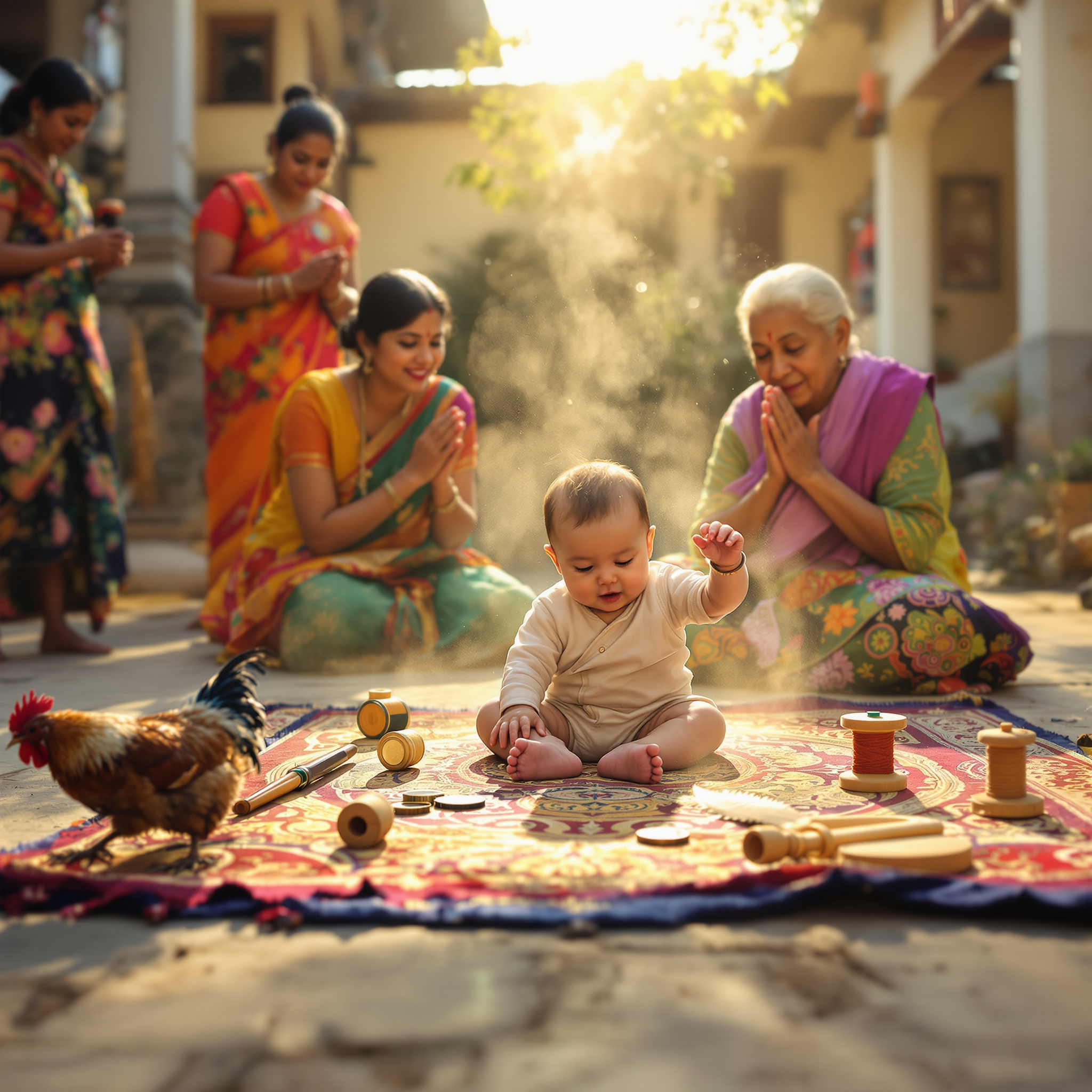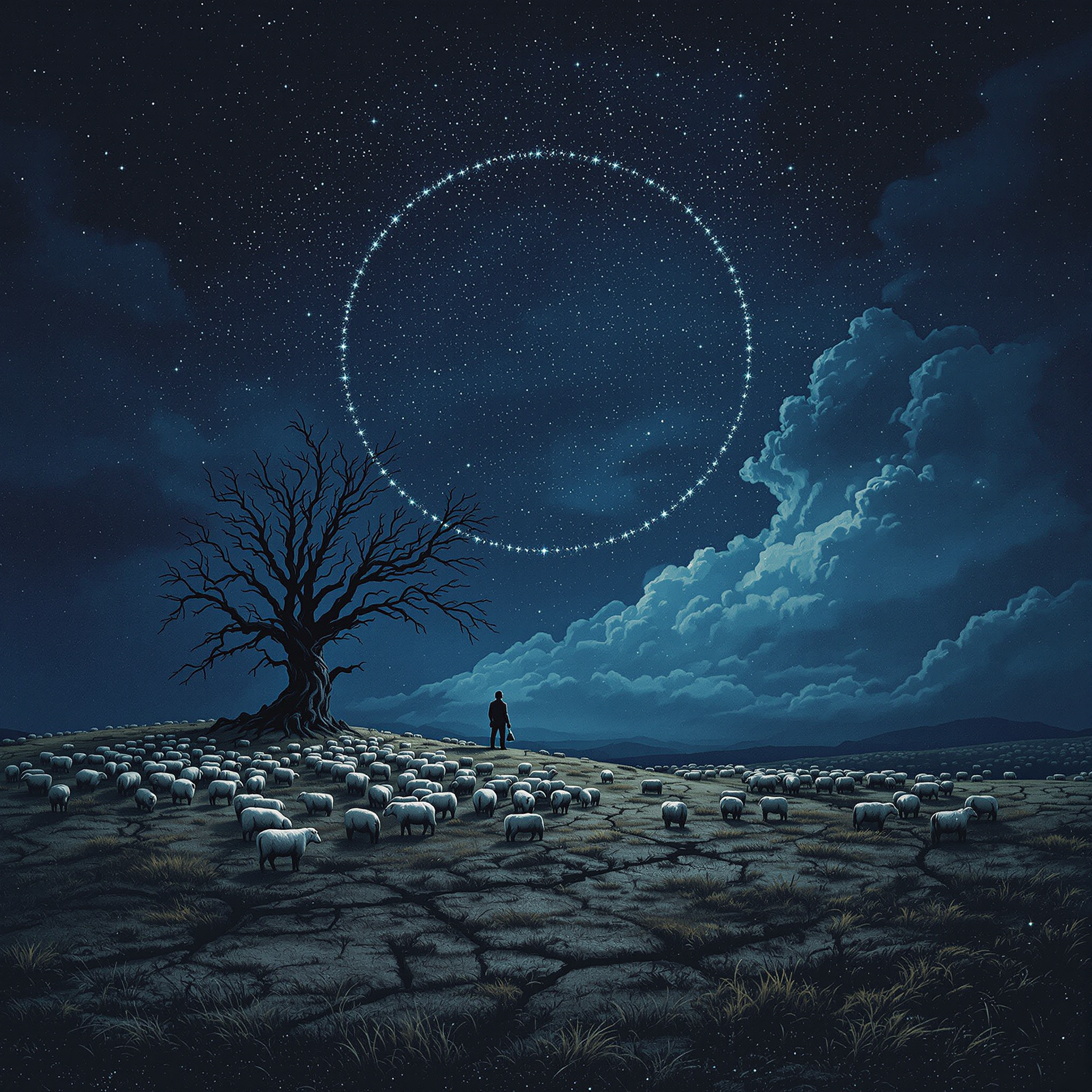This superstition is based on the visual observation of a halo—an optical phenomenon sometimes seen around the moon. On nights when a ring or halo forms around the moon, people would count the number of stars visible within or near this ring. Each star was said to represent one day until a coming storm. For example, if six stars appeared inside or close to the lunar halo, a storm was believed to arrive in six days. The practice was often used by farmers, sailors, and travelers who placed a high reliance on weather predictions for safety and livelihood. It reflects a practical attempt to read signs from the sky in the absence of modern meteorology. The superstition emphasized careful observation and offered a sense of agency in anticipating natural changes, especially during uncertain seasonal transitions.

A baby’s future career or fate is predicted by the first object they select during a ceremonial setup.
In several Asian and Eastern European cultures, a traditional ceremony is held for babies usually around their first birthday. Known


